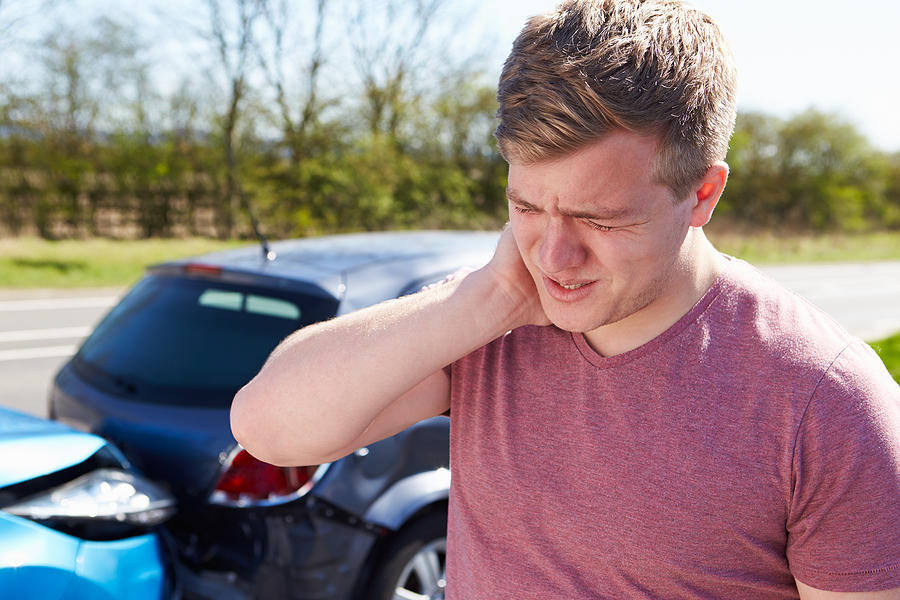
When one’s neck suddenly snaps forward and backward, this often results in pain and strain called whiplash. This quick, often unsupported neck movement can cause long-term damage to unsuspecting people. According to a chiropractors who specialize in whiplash, this type of injury frequently occurs as a result of car accidents, close-contact sports, or even slip and falls.
Although a few people joke that watching someone pace back and forth can give them whiplash, this condition is no laughing matter, especially since a study recently reported that whiplash affects millions of Americans every year. The impact of whiplash varies per person. Some are lucky to experience only mild discomfort, while others are left to deal with whiplash associated symptoms that last for years or decades. As a famous saying goes, knowledge is key. So, let us go ahead and debunk the top four myths about whiplash.
It is most probable for someone to experience whiplash as a result of a car accident. When a person is forced forward either by a bump in the rear or a sudden braking movement and then is pulled right back by the seatbelt, this sudden movement can result in whiplash.
However, this is not the only case when this happens. Boxers can experience whiplash when they get punched in the face. A ride on a multi-loop, sudden-drop roller coaster can also lead to whiplash. The abrupt, unexpected twists and turns have been blamed for some neck injuries.
This one makes the most sense for most people because of the possible drastic movements caused by a vehicular collision. However, did you know that quite a good number of whiplash injuries have been reported by people involved in vehicular accidents that clocked at less than 10 miles per hour? Incredible, right?
Although our bodies can generally protect us from many things, sadly, whiplash is not one of them. Despite being part of a sophisticated system, the neck is quite vulnerable. Whiplash does not entirely occur during fast-speed incidents but is also possible during leisurely drives.
As shared by a whiplash chiropractor, this type of injury affects the neck and its surrounding tissues and joints. These are not wholly visible to untrained eyes. Unlike a surface wound that leaves tell-tale signs of bruising and healing, a lot of people think that they are 100 percent okay if they do not have the marks to show as proof.
The effects of whiplash may not manifest right away or even overnight. A few people have reported feeling pain in their upper body weeks after a whiplash-inducing event. Pain medications can also mask the symptoms of whiplash, so someone who is medicated for mild symptoms might not report it right away until after the pain persists or becomes more pronounced.
Taking the correct prescription medication is important in many circumstances. Pain relievers may mask the discomfort brought about by whiplash. However, it is not going to make it go away. Some whiplashes have lasting effects on the body, which will not be relieved by pain pills.
It is also important to note that whiplash does not have a singular effect on one’s body. Different people have shared various experiences other than the usual strained neck and shoulders. Some people have complained of dizziness and persistent headaches. If we consider this and the experiences of a chiropractors who specialize in whiplash, injuries might require long-term healing solutions beyond the usual pain remedies.
Now that we have refuted some of the well-known myths about whiplash, you might be wondering what you can do to safeguard yourself and your family against this? In the same token that sparring partners use boxing headgear to protect themselves, it is crucial to equip your vehicles with the correct headrest.
Not only will the appropriate headrest make you feel comfortable during a drive, but it should also be able to provide some support in the unlikely event of a vehicular collision. Adjust the height of your headrest if needed. Also, opt not to recline your seat, so your head is as close to the headrest as possible. The shorter the gap, the lesser the impact, if any.
Now that you have taken care of your car, what can you do if you or someone you know is experiencing the effects of whiplash?
The National Upper Cervical Chiropractic Association (NUCCA) has specialized chiropractors who can help you address the lingering symptoms of whiplash. NUCCA chiropractors thoroughly evaluate the neck to assess damage and a course of action to correct misalignments from accidents and injuries.
Check out our directory, enter your zip code, and see if there is a chiropractor near you. A consultation with a NUCCA doctor in your city might shed some light on how you can address the effects of whiplash, what can be done to lessen the discomfort, and how to protect yourself from a similar incident in the future. Being equipped with the right knowledge is your first real step towards healing.
[blog-button]